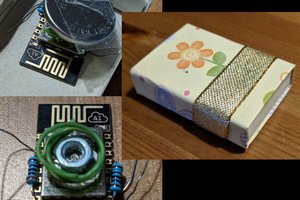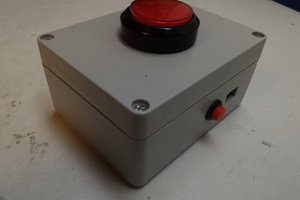Image showing wiring relates to the following:
1. Cricket WiFi module
2. Wakeup trigger from button
3. GND to Cricket
4. VCC to Cricket
5. VCC from battery to button and Cricket(4). I solder the three cables to a thin cut strip of veroboard and heat shrink it, i've got no idea if this is even a good way to do it, it works anyway. I've also used Dupont connectors and headers so I can easily repurpose the module in the future.
 Phil Cole
Phil Cole


 Hagen Fritsch
Hagen Fritsch
 facelessloser
facelessloser
 Robin Hartley
Robin Hartley